Lifting In Badminton - Everything You Need To Know!
The badminton lift shot is played from the front of the court on one side to the back of the court on the other side, with an upwards trajectory. It is often played to reset the rally or to move the opponent.

To play a good badminton lift, you need to have a strong, controlled lunge, keeping your torso upright and core strong. You should land your lunging foot just before you strike the shuttle. For singles, the racket shaft should be more vertical and for doubles, it should be more horizontal.
We’ll now go through:
- When you should play the lift shot
- The footwork
- The technique
- Lifting exercises to help you put everything into practice!
When Should You Play A Lift and Why is it important to use it?
There are two key reasons why you might play a lift in a rally:
1. To reset the rally – when you’re under pressure and feel like you can’t play any other shots without putting yourself into more trouble. Lifting will allow yourself the time to get back into a good position and reset the rally.
2. To move your opponent – which puts their speed and footwork under pressure, either tiring them out, or forcing them to play a bad shot that you can then take advantage of.
Even though the lift can often be seen as more of a defensive shot, and therefore less ‘exciting’ to play, it’s common to see players making unforced errors by hitting lifts either short or out.
BUT, no matter what level you play at, improving your lift shot accuracy and consistency will help take your game to the next level. It’s also a great feeling when you force an error from your opponent with a really accurate lift!
Footwork: What is the best movement for a lift shot?
First, you need to perform the split step, which you can learn more about here.
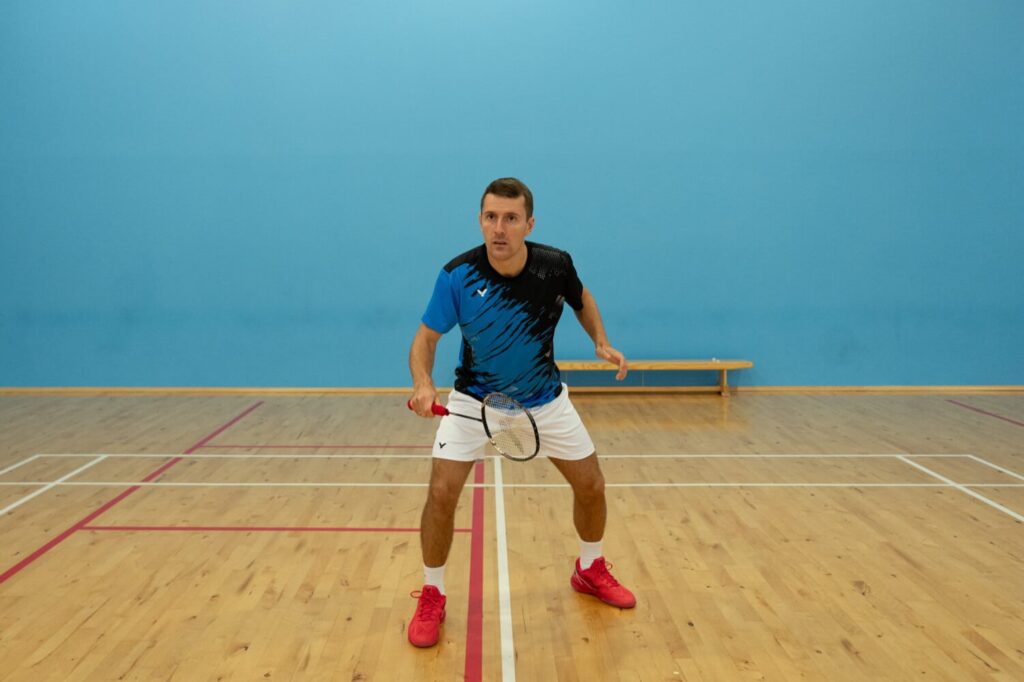
Then:
- If you are moving towards the forehand corner, bring your non-racket leg towards your racket leg, and then push off to lunge into the corner.
- If you are moving towards the backhand corner, pivot on your non-racket leg and then lunge into the corner.
🔑 You should always lunge with your racket leg!
This footwork is the same no matter if you’re moving sideways or directly forwards (for example from a side-by-side defensive position in doubles).
Lastly, there are a 3 key points that are ESSENTIAL to get right when moving to hit a lift shot:
- You need to have a strong, controlled lunge, keeping your torso upright and core strong – this will help ensure you remain much more in control of your body and therefore shot. There will be times that you are taking the shuttle very late (nearly from the ground) meaning you will be in a deep lunge and not able to do this. This is where you need to rely on other parts of your technique to help you play an accurate shot.
- Keep your head upright throughout the movement and shot – if you’re looking at the floor as you strike the shuttle, your shot timing will be hugely affected, as well as not being able to see where you’re hitting! There may be an exception to this when you are playing a lift from in a very late position.
- Land your lunging foot just before you strike the shuttle – This ensures maximum control of your body and racket. Landing too early means you then can’t adjust your positioning. Landing too late will reduce the amount of control you have over your body, reducing the shot accuracy.
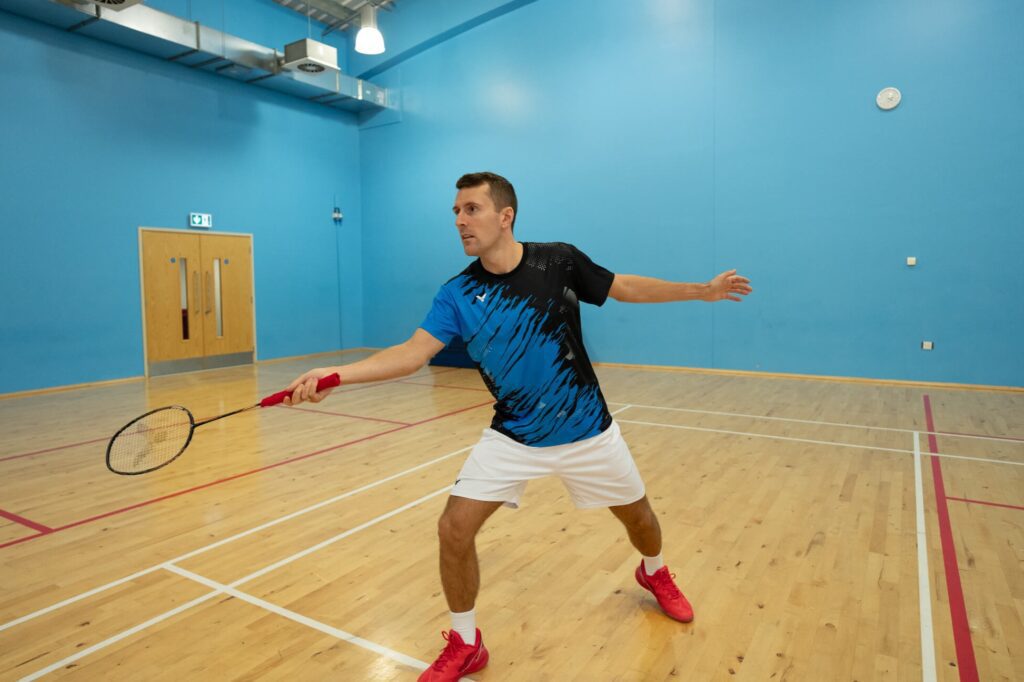
Technique: Racket preparation and grip
Your racket preparation depends on whether you are playing singles or doubles:
For singles:
- You should hold the racket shaft more vertically

For doubles:
- You should hold the racket shaft more horizontally

💡 This is because your preparation should be similar for both your lifts and net shots, and whether you’re hitting straight or cross court.
As well as this, there are 2 more important points about racket preparation:
- You should have your non-racket arm out behind you, which will help with balance and enable you to remain in control of your body, therefore shot.
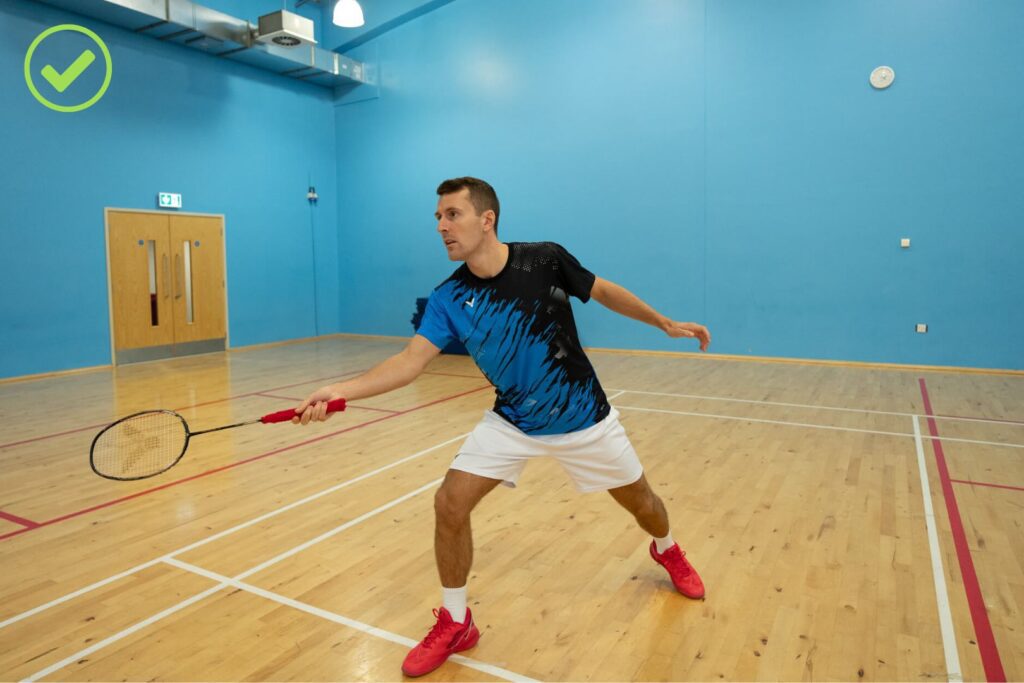

- Make sure your racket arm isn’t tucked in when you play the shot – this is a common mistake we see, especially on the forehand side.

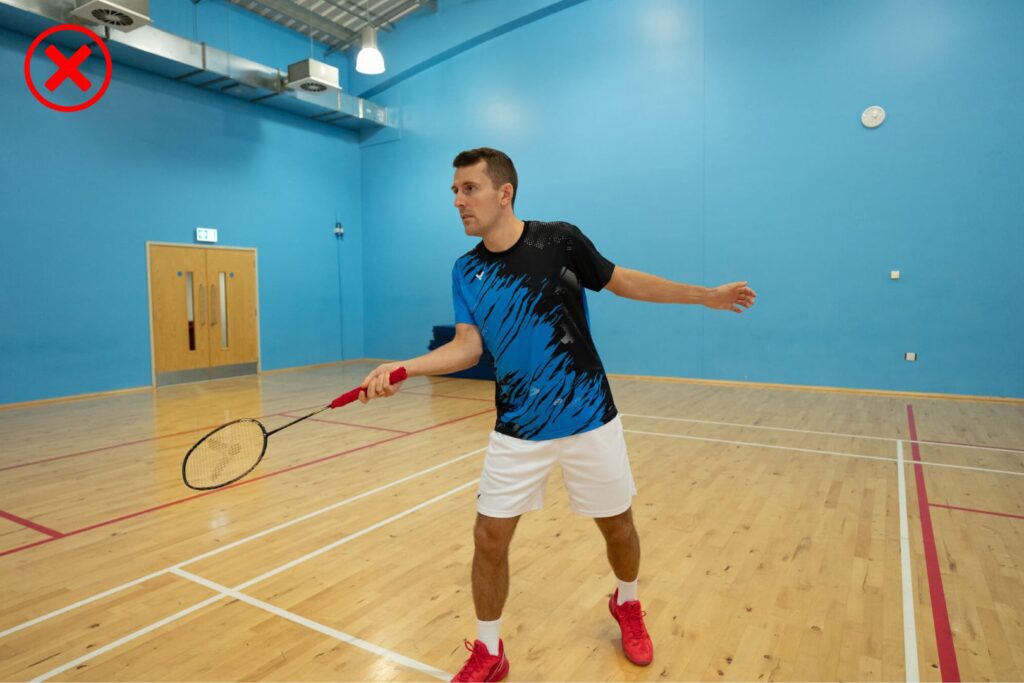
What grip should you use for the lift? You should use a forehand grip for a forehand lift, and a backhand grip for a backhand lift!
This sounds straight forward but we often see players struggle with lifting on their backhand side in particular due to them having the wrong grip. So in this instance, it’s important to try and get used to just using your thumb to generate power.

So putting it altogether with your good footwork, racket preparation and grip, you want to have a short swing, using your thumb and fingers to hit the shuttle in the direction you want it to travel.
A large percentage of the lift power should come from the squeeze of the fingers (and thumb on the backhand side) because if you use your arm too much you will lose both your power and control.
💡 You can have a longer follow through in the lift compared to most other shots since you have more time to recover before the next shot. Remember to also follow through in the direction that you want the shuttle to go to ensure accuracy of the shot.
Lift Practices: 4 ways to improve your badminton lift shot
To get better at anything, you need to practice it! So in this list, each practice progresses from the one before to help you go from getting the technique right, to being able to use it effectively in a rally.
1. Hand-Feed
- Ask your partner to throw the shuttle in front of the service line to the side that you want to practice the lift

- This enables you to fully focus on the technique to start off with
- Practice lifting both straight and cross, and also with different heights (we go through why you need to use these different heights in much more detail in our Advanced Lifting Tutorial, which you can check out here)
- You can also practice using targets to make it more fun and challenging!
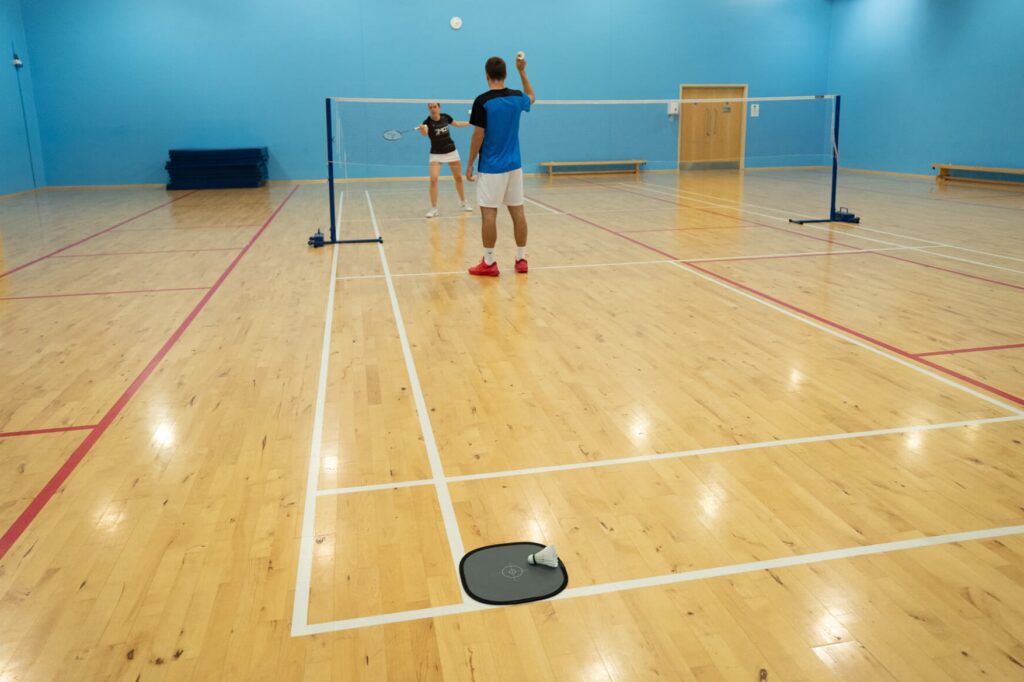
2. Racket Feed
- This is similar to the first exercise, except the feeder will hit the shuttle into the court instead of throwing
- Practice lifting with different heights
- Practice both straight and cross lifts (using the same racket preparation)
3. Out of position
- Lifts are harder to play when you’re out of position, and this will happen often in a match, so it’s important to practice this too!
- Experiment with your starting position and practice moving sideways or even slightly behind you when playing the lift
- This can be done as either a hand feed or racket feed
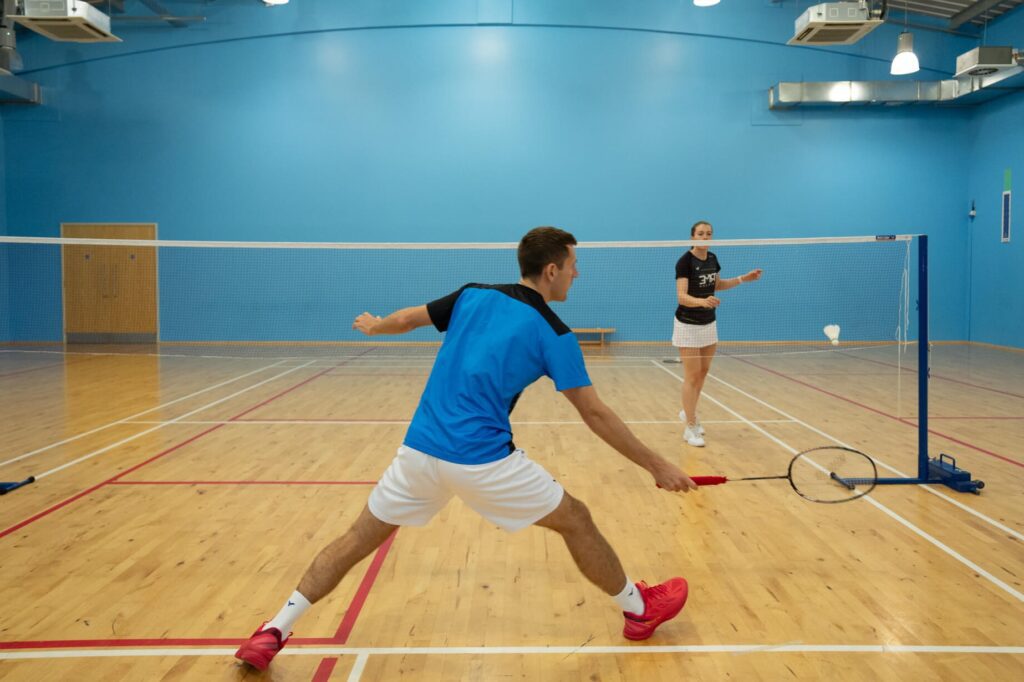
4. Single Shuttle
- This enables you to practice it within a rally and can be done in many ways
- For example, one person is lifting the shuttle repeatedly to one corner, making sure to move back to the base after each shot. This may seem boring but lift accuracy is so important in badminton and sometimes we don’t practice the simple things enough!
- Another example is to lift to different sides with the feeder moving across the back line, meaning they can also practice their drops and movement
Learn More
Now that we’ve gone through why the lift is important, when you should play it, the footwork, technique, and practices, we hope that you’ve learned how to play a basic lift!
If you’re interesting in learning more you can check out our Advanced Lifting Tutorial here where we take an in-depth look at lifting and how you can utilise this shot in an offensive rather than defensive way! Specifically, we show you the technique and tactics of using both flat and high lifts for doubles and singles as well as some routines to practice these.
And if you’d like to watch our YouTube video on how to perform the badminton lift which includes more visual explanations, you can do so below.

